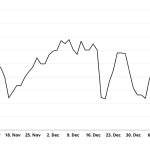
Dividend kings are companies that have raised their dividends for at least 50 consecutive years. Most of the companies that have achieved the latter milestone have had strong, growing businesses, excellent balance sheets, and sound fundamentals during most or all of the last 50 years. Without the latter characteristics, they would not have been able to raise their payouts for five decades straight. Dividend kings are some of the best dividend stocks.
However, as the famous saying goes, “past performance is not a guarantee of future results.” What’s more, stocks tend to outperform only when the companies that issued them beat the Street’s expectations and/or generate impressive, accelerating growth.
Therefore, I’ve assembled a list of three dividend kings with superb fundamentals, powerful, positive catalysts, and relatively low valuations. These characteristics should enable them to generate both stronger-than-expected financial results and accelerate bottom lines, allowing them to outperform the stock market over the long term. They are dividend stocks every income investors should consider.
Emerson Electric (EMR)

Emerson Electric (NYSE:EMR) provides many products for industrial customers, including various types of equipment, automation tools, software, and “heating and air conditioning products.”
The company is well-positioned to benefit from several influential, current trends. Specifically, it should get a big lift from the onshoring trend, which involves many companies building factories in the U.S. As a consequence of this development, the demand for Emerson’s equipment should surge.
Moreover, the sales of the company’s automation tools should accelerate due to rising labor costs and labor shortages. EMR’s $8.5 billion acquisition of National Instruments (NASDAQ:NATI), which provides “automated test and measurement” products, should increase the extent to which EMR can benefit from the likely increasing demand for automation products by industrial firms going forward.
Walmart (WMT)

Walmart (NYSE:WMT) is growing fairly rapidly, as its sales climbed nearly 6% in the second quarter versus the same period a year earlier, and its operating income, excluding certain items, jumped 8% year-over-year.
Last month, WMT was upbeat about its “ability to grow operating income faster than sales,” Morgan Stanley reported after meeting with its management. The company expects to realize “efficiencies” and benefit by offering a greater quantity of more profitable products.
The retail giant is also using AI, both to increase the efficiency of the workers in its stores and to enable its customers to more quickly and easily identify the products that they’re looking for and buy those products. Regarding customers, Walmart is using AI to introduce “a shopping assistant, generative AI-powered search, and an interior design feature.”
Over the longer term, AI should boost the company’s top and bottom lines meaningfully by enabling it to reduce its costs and increase its sales.
Given Walmart’s current growth and future potential, the forward price-earnings ratio of 22.5 is fairly low.
Archer-Daniels-Midland (ADM)

Archer-Daniels Midland’s (NYSE:ADM) Ag Services and Oilseeds business, which accounted for 78% of its revenue in 2022, has multiple, strong catalysts.
First, the unit is getting a big lift from strong biofuel demand, CEO Juan Luciano told JPMorgan last month.
“We have seen solid margins in biodiesel. We have seen robust domestic and export demand for ethanol,” Luciano reported.
The company’s new soybean crushing plant in North Dakota began operations earlier this month to enable ADM to exploit the strong demand for biofuels further.
And the company expects to benefit from strong exports of corn and soybeans from Brazil.
ADM’s forward price-earnings ratio of 9.7 appears to undervalue the company, given the robust and long-term potential of its Ag Services and Oilseeds business.
On the date of publication, Larry Ramer did not hold (either directly or indirectly) any positions in the securities mentioned in this article. The opinions expressed in this article are those of the writer, subject to the InvestorPlace.com Publishing Guidelines.




